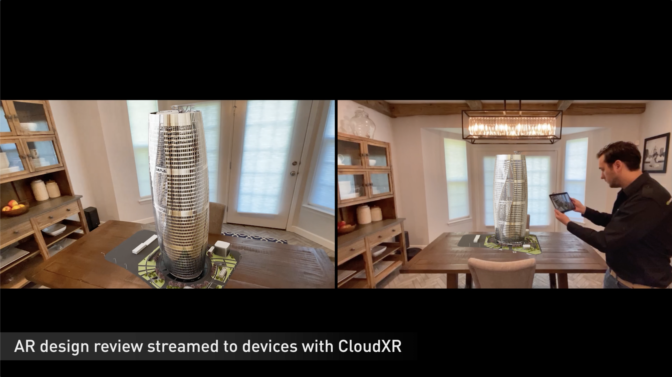Virtual experiences are changing the way we work, play and collaborate. Immersive environments are delivering new levels of realism for professionals in healthcare, architecture and automotive design.
See how NVIDIA is powering the future of these XR technologies at the GPU Technology Conference, taking place October 5-9.
We’ll showcase the latest advances and features in augmented, mixed and virtual reality — collectively known as XR. Customers and partners will demonstrate how they’re using NVIDIA technologies to create and consume high-quality virtual experiences, and how streaming content is becoming an integral part of workflows across industries.
- Hear how leading experts and companies are using NVIDIA CloudXR to provide tetherless high-fidelity XR streaming over 5G networks.
- The Grid Factory will share how streaming XR over 5G has changed their workflows completely, and they’ll present best practices on how to leverage NVIDIA CloudXR to stream the best immersive experiences on low-cost, wirelessly connected headsets.
Taiwanese XR partner VAR Live will reveal how they’re enhancing VR experiences through 5G networks by using CloudXR.
Learn how NVIDIA DLSS makes it possible to render fewer pixels, and then use AI to construct sharp, high-resolution images. With NVIDIA DLSS, developers can increase the richness and complexity of their immersive content, while still maintaining the 90Hz frame rates required for great VR experiences.
See how professionals can enhance training, collaboration and productivity with the new HP Reverb G2 Omnicept Edition and the HP Omnicept SDK. With HP Omnicept, VR experiences can adapt naturally to individual participants with eye tracking, real-time cognitive load and a built-in face camera.
And get an inside look at NVIDIA Omniverse Kit, which is bringing its ray-tracing engine to virtual reality. Foveated rendering, lens warping, eye tracking and multi-GPU are delivering the highest performance, highest quality visualizations to AR and VR devices.
View the many GTC sessions that discuss the future of XR, including these highlights:
- AR and VR Graphics Technologies at NVIDIA — Hear the latest news and updates on our XR technologies, from low-level APIs used to access special XR hardware features like variable rate shading, to complex libraries and technology stacks like XR streaming from the cloud. Learn about the newest SDKs for deep learning-based upsampling and real-time streaming of global illumination data, as well as upcoming technologies in development.
- AR and VR Solution Design Considerations for Large-Scale Deployments — Learn the key factors for designing XR solutions that are deployable at scale. Whether it’s for individual or collaborative training, PC-tethered headsets or wireless streaming, and other use cases, we’ll discuss the differences between existing and emerging technologies to help people find the best solution.
- Calm Design and Compute Power: Combining Design and GPUs to Improve Surgical Performance — Surgeons need an improved way to analyze and receive information to make surgeries more efficient, less stressful and result in better outcomes. Learn how Proprio is using NVIDIA technology to create systems that acquire, inform and deliver better surgical information to improve surgery.
Register now for GTC and check out all the other sessions available.
